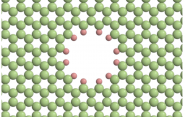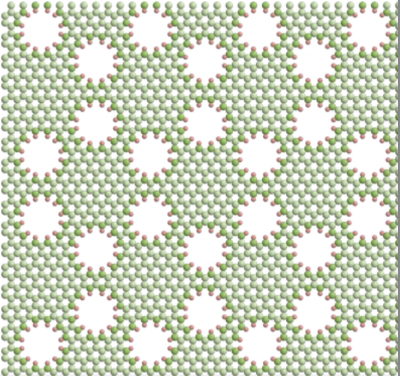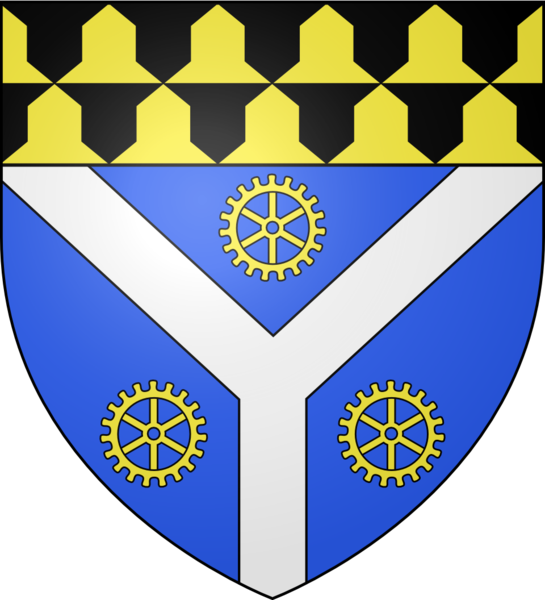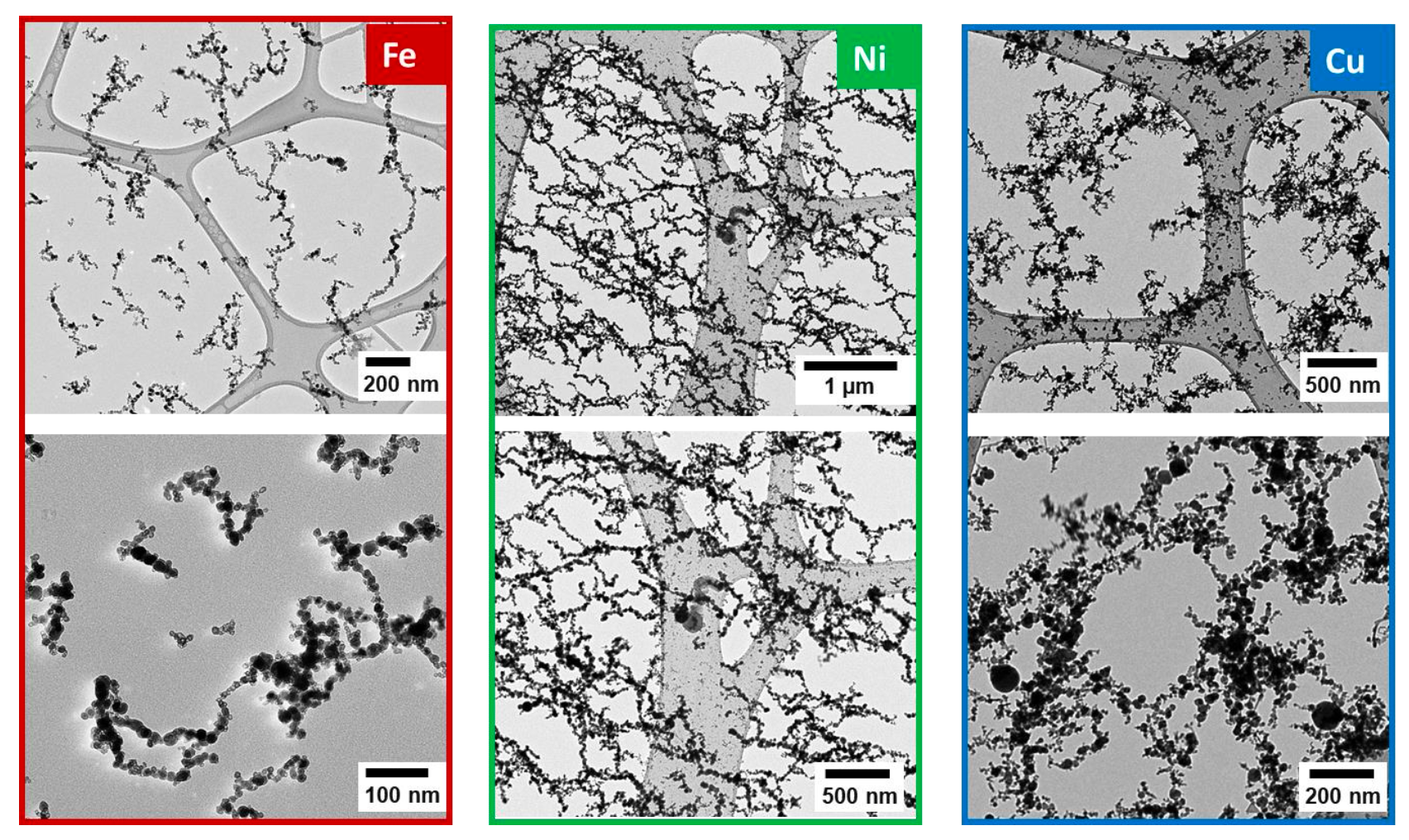From The School of Engineering and Applied Science
At
2.6.24
Nanoporous membranes have been shown to be valuable tools for filtering out impurities from water and numerous other applications. However, there’s still much work to be done in perfecting their designs. Recently, the lab of Prof. Amir Haji-Akbari has demonstrated that exactly where the nanosized holes are placed on the membrane can make a big difference. The results are in ACS Nano.
In recent years, nanoporous membranes made from graphene, polymers, silicon and other materials have been used successfully for separating gas, desalinating water, virus filtration, power generation, gas storage, and drug delivery. However, creating membranes that let all the right molecules pass through while keeping the undesired ones out has proven tricky.
For desalinating water, for instance, it’s crucial that the membrane has a high permeability for water while sufficiently blocking small ionic and molecular solutes, and other impurities. But researchers have found that enhancing the permeability of a membrane often compromises its selectivity, and vice versa.
One promising approach is to optimize the chemistry and geometry of isolated nanopores to achieve the desired permeability and selectivity, and place as many of those pores as possible within a nanoporous membrane. Exactly how neighboring pores affect each other, though, is unclear. At the nanoscale, molecules interacting with pore walls can exhibit behaviors that defy conventional theories. The Haji-Akbari lab explored whether they could design innovative membrane systems with increased precision and efficiency by fine-tuning the nanopores.

Hexagonal lattice. Yale SEAS.

Honeycomb lattice. Yale SEAS.
With computer simulations, Haji-Akbari’s research team found that nanoscale proximity between pores can detrimentally affect water permeability and salt rejection. Specifically, they created simulations of membranes with varying patterns of pore placement, including a hexagonal lattice and a honeycomb lattice. What they found was that the hexagonal pattern, which allowed for more distance between pores, had a greater permeability/selectivity performance than the membrane with the honeycomb pattern.
[Looking at both images, one can see hexagon formations in both images, so the hexagonal lattice needs to be renamed.]
These effects deviate from established theories, Haji-Akbari said.
“This assumption that the pore resistance is independent of the proximity of the pore is not correct,” said Haji-Akbari, assistant professor of chemical & environmental engineering. “Clearly, it depends on proximity.”
Their findings shed insight on how these effects accelerate the movements of certain ions through membranes while causing other ions to decelerate. Further, it can inform better designs of nanoporous membranes for enhanced separation processes such as water desalination and other applications.
See the full article here .
Comments are invited and will be appreciated, especially if the reader finds any errors which I can correct. Use “Reply” at the bottom of the post.
five-ways-keep-your-child-safe-school-shootings
Please help promote STEM in your local schools.

The School of Engineering & Applied Science is the engineering school of Yale University. When the first professor of civil engineering was hired in 1852, a Yale School of Engineering was established within the Yale Scientific School, and in 1932 the engineering faculty organized as a separate, constituent school of the university. The school currently offers undergraduate and graduate classes and degrees in electrical engineering, chemical engineering, computer science, applied physics, environmental engineering, biomedical engineering, and mechanical engineering and materials science.
Yale University is a private Ivy League research university in New Haven, Connecticut. Founded in 1701 as the Collegiate School, it is the third-oldest institution of higher education in the United States and one of the nine Colonial Colleges chartered before the American Revolution. The Collegiate School was renamed Yale College in 1718 to honor the school’s largest private benefactor for the first century of its existence, Elihu Yale. Yale University is consistently ranked as one of the top universities and is considered one of the most prestigious in the nation.
Chartered by Connecticut Colony, the Collegiate School was established in 1701 by clergy to educate Congregational ministers before moving to New Haven in 1716. Originally restricted to theology and sacred languages, the curriculum began to incorporate humanities and sciences by the time of the American Revolution. In the 19th century, the college expanded into graduate and professional instruction, awarding the first PhD in the United States in 1861 and organizing as a university in 1887. Yale’s faculty and student populations grew after 1890 with rapid expansion of the physical campus and scientific research.
Yale is organized into fourteen constituent schools: the original undergraduate college, the Yale Graduate School of Arts and Sciences and twelve professional schools. While the university is governed by the Yale Corporation, each school’s faculty oversees its curriculum and degree programs. In addition to a central campus in downtown New Haven, the university owns athletic facilities in western New Haven, a campus in West Haven, Connecticut, and forests and nature preserves throughout New England. The Yale University Library, serving all constituent schools, holds more than 15 million volumes and is the third-largest academic library in the United States. Students compete in intercollegiate sports as the Yale Bulldogs in the NCAA Division I – Ivy League.
A number of Nobel laureates, Fields Medalists, Abel Prize laureates, and Turing award winners have been affiliated with Yale University. In addition, Yale has graduated many notable alumni, including U.S. Presidents, U.S. Supreme Court Justices, a number of living billionaires, and many heads of state. Hundreds of members of Congress and many U.S. diplomats, many MacArthur Fellows, Rhodes Scholars, Marshall Scholars, and Mitchell Scholars have been affiliated with the university.
Research
Yale is a member of the Association of American Universities and is classified among “R1: Doctoral Universities – Very high research activity”.
Yale’s faculty include a number of members of the National Academy of Sciences , the National Academy of Engineering and members of the American Academy of Arts and Sciences . The college is, after normalization for institution size, the tenth-largest baccalaureate source of doctoral degree recipients in the United States, and the largest such source within the Ivy League.
Yale’s English and Comparative Literature departments were part of the New Criticism movement. Of the New Critics, Robert Penn Warren, W.K. Wimsatt, and Cleanth Brooks were all Yale faculty. Later, the Yale Comparative literature department became a center of American deconstruction. Jacques Derrida, the father of deconstruction, taught at the Department of Comparative Literature from the late seventies to mid-1980s. Several other Yale faculty members were also associated with deconstruction, forming the so-called “Yale School”. These included Paul de Man who taught in the Departments of Comparative Literature and French, J. Hillis Miller, Geoffrey Hartman (both taught in the Departments of English and Comparative Literature), and Harold Bloom (English), whose theoretical position was always somewhat specific, and who ultimately took a very different path from the rest of this group. Yale’s history department has also originated important intellectual trends. Historians C. Vann Woodward and David Brion Davis are credited with beginning in the 1960s and 1970s an important stream of southern historians; likewise, David Montgomery, a labor historian, advised many of the current generation of labor historians in the country. Yale’s Music School and Department fostered the growth of Music Theory in the latter half of the 20th century. The Journal of Music Theory was founded there in 1957; Allen Forte and David Lewin were influential teachers and scholars.
In addition to eminent faculty members, Yale research relies heavily on the presence of a large number of postdocs from various national and international origin working in the multiple laboratories in the sciences, social sciences, humanities, and professional schools of the university. The university progressively recognized this working force with the recent creation of the Office for Postdoctoral Affairs and the Yale Postdoctoral Association.
Notable alumni
Over its history, Yale has produced many distinguished alumni in a variety of fields, ranging from the public to private sector. Around 71% of undergraduates join the workforce, while the next largest majority of 16.6% go on to attend graduate or professional schools. Yale graduates have been recipients of Rhodes Scholarships, Marshall Scholarships, Truman Scholarships, Churchill Scholarships, and Mitchell Scholarships. The university is also a large producer of Fulbright Scholars, and has produced many MacArthur Fellows. The U.S. Department of State Bureau of Educational and Cultural Affairs ranked Yale highly among research institutions producing the most Fulbright Scholars.
At Yale, one of the most popular undergraduate majors among Juniors and Seniors is political science, with many students going on to serve careers in government and politics. Former presidents who attended Yale for undergrad include William Howard Taft, George H. W. Bush, and George W. Bush while former presidents Gerald Ford and Bill Clinton attended Yale Law School. Former vice-president and influential antebellum era politician John C. Calhoun also graduated from Yale. Former world leaders include Italian prime minister Mario Monti, Turkish prime minister Tansu Çiller, Mexican president Ernesto Zedillo, German president Karl Carstens, Philippine president José Paciano Laurel, Latvian president Valdis Zatlers, Taiwanese premier Jiang Yi-huah, and Malawian president Peter Mutharika, among others. Prominent royals who graduated are Crown Princess Victoria of Sweden, and Olympia Bonaparte, Princess Napoléon.
Yale alumni have had considerable presence in U.S. government in all three branches. On the U.S. Supreme Court, a number of justices have been Yale alumni, including Associate Justices Sonia Sotomayor, Samuel Alito, Clarence Thomas, and Brett Kavanaugh. Numerous Yale alumni have been U.S. Senators, including current Senators Michael Bennet, Richard Blumenthal, Cory Booker, Sherrod Brown, Chris Coons, Amy Klobuchar, Ben Sasse, and Sheldon Whitehouse. Current and former cabinet members include Secretaries of State John Kerry, Hillary Clinton, Cyrus Vance, and Dean Acheson; U.S. Secretaries of the Treasury Oliver Wolcott, Robert Rubin, Nicholas F. Brady, Steven Mnuchin, and Janet Yellen; U.S. Attorneys General Nicholas Katzenbach, John Ashcroft, and Edward H. Levi; and many others. Peace Corps founder and American diplomat Sargent Shriver and public official and urban planner Robert Moses are Yale alumni.
Yale has produced numerous award-winning authors and influential writers, like Nobel Prize in Literature laureate Sinclair Lewis and Pulitzer Prize winners Stephen Vincent Benét, Thornton Wilder, Doug Wright, and David McCullough. Academy Award winning actors, actresses, and directors include Jodie Foster, Paul Newman, Meryl Streep, Elia Kazan, George Roy Hill, Lupita Nyong’o, Oliver Stone, and Frances McDormand. Alumni from Yale have also made notable contributions to both music and the arts. Leading American composer from the 20th century Charles Ives, Broadway composer Cole Porter, Grammy award winner David Lang, and award-winning jazz pianist and composer Vijay Iyer all hail from Yale. Hugo Boss Prize winner Matthew Barney, famed American sculptor Richard Serra, President Barack Obama presidential portrait painter Kehinde Wiley, MacArthur Fellow and contemporary artist Sarah Sze, Pulitzer Prize winning cartoonist Garry Trudeau, and National Medal of Arts photorealist painter Chuck Close all graduated from Yale. Additional alumni include architect and Presidential Medal of Freedom winner Maya Lin, Pritzker Prize winner Norman Foster, and Gateway Arch designer Eero Saarinen. Journalists and pundits include Dick Cavett, Chris Cuomo, Anderson Cooper, William F. Buckley, Jr., and Fareed Zakaria.
In business, Yale has had numerous alumni and former students go on to become founders of influential business, like William Boeing (Boeing, United Airlines), Briton Hadden and Henry Luce (Time Magazine), Stephen A. Schwarzman (Blackstone Group), Frederick W. Smith (FedEx), Juan Trippe (Pan Am), Harold Stanley (Morgan Stanley), Bing Gordon (Electronic Arts), and Ben Silbermann (Pinterest). Other business people from Yale include former chairman and CEO of Sears Holdings Edward Lampert, former Time Warner president Jeffrey Bewkes, former PepsiCo chairperson and CEO Indra Nooyi, sports agent Donald Dell, and investor/philanthropist Sir John Templeton,
Yale alumni distinguished in academia include literary critic and historian Henry Louis Gates, economists Irving Fischer, Mahbub ul Haq, and Nobel Prize laureate Paul Krugman; Nobel Prize in Physics laureates Ernest Lawrence and Murray Gell-Mann; Fields Medalist John G. Thompson; Human Genome Project leader and National Institutes of Health director Francis S. Collins; brain surgery pioneer Harvey Cushing; pioneering computer scientist Grace Hopper; influential mathematician and chemist Josiah Willard Gibbs; National Women’s Hall of Fame inductee and biochemist Florence B. Seibert; Turing Award recipient Ron Rivest; inventors Samuel F.B. Morse and Eli Whitney; Nobel Prize in Chemistry laureate John B. Goodenough; lexicographer Noah Webster; and theologians Jonathan Edwards and Reinhold Niebuhr.
In the sporting arena, Yale alumni include baseball players Ron Darling and Craig Breslow and baseball executives Theo Epstein and George Weiss; football players Calvin Hill, Gary Fenick, Amos Alonzo Stagg, and “the Father of American Football” Walter Camp; ice hockey players Chris Higgins and Olympian Helen Resor; Olympic figure skaters Sarah Hughes and Nathan Chen; nine-time U.S. Squash men’s champion Julian Illingworth; Olympic swimmer Don Schollander; Olympic rowers Josh West and Rusty Wailes; Olympic sailor Stuart McNay; Olympic runner Frank Shorter; and others.









